|

A JOURNEY THROUGH COLOMBIA

Dear Travel Partner,
our final journey of the year takes us to Colombia! Filled with diversity and wonders, this small country has rapidly become a favorite destination among South America travelers. From green hills, waterfalls, ravines, rainforest, volcanoes, and deserts to white sandy beaches and turquoise waters on the Caribbean coast - there is nothing that Colombia doesn't offer!
It is a biodiversity haven that boasts exotic fauna and flora, like the world’s highest palm tree, and some of the best coffee. Colombia's culture is rich with ancient civilizations, mystic history and valued traditions that that are still celebrated today. There are vibrant cities with historical architecture and colonial charm as well as dreamy little towns nestled in mountains or forests.
So get comfortable and let us show you Colombia in all its glory!
All the best,
your SAT Team
|
 |
|
 |

|
 |
|
 |
 |
|
Angela Ovalle, GM of SAT Colombia, would like to kick off this newsletter edition with a few personal words:
"Colombia is my home and my passion. For more than 30 years I have been working in tourism in Colombia and to this day I keep discovering new fascinating places and natural wonders in this beautiful country that I would love to show your passengers. For those who are unsure whether Colombia is a safe place to travel, I can only emphasize the slogan ProColombia created some time ago: The only risk is wanting to stay!
To create a lifetime experience for any passenger is our main goal, not only in SAT Colombia but SAT in general. The team and I look forward to welcoming you back soon!"
|
|
|
|

|
|
*** Temporary office hours (Monday-Friday) ***
|
| SAT Argentina: |
09:00h - 14:30h |
| SAT Brazil: |
09:00h - 13:00h |
| SAT Chile: |
09:00h - 13:30h |
| SAT Colombia: |
09:30h - 17:30h |
|
|
|
|
| SAT Ecuador: |
09:30h - 17:30h |
| SAT Peru: |
08:00h - 14:00h |
| SAT Uruguay: |
09:30h - 13:30h |
|
|
AREPAS - COLOMBIA'S DELICIOUS ALL-ROUNDER
|
 |
|
If there is one food Colombians can't live without, it has to be arepas. And for good reason: you can eat these delicious maize patties anytime, anywhere and with whatever topping or filling you like! The best thing is that every region has its own version so we guarantee that no matter how long you travel through Colombia, you will never tire of this tasty snack!
This easy recipe will make 4 cheese arepas:
1 cup of pre-cooked arepa flour (masarepa) or refined cornmeal*
1 cup warm water
1/3 cup grated cheese (we recommend mozzarella)
1 tbsp butter
a pinch of salt
*You can find masarepa or cornmeal in Latin American specialty stores, well-stocked super markets or online shops.
Combine all your ingredients and mix well, then let the dough rest for 5 minutes. Knead the dough for 3 minutes while moistening your hands with water to avoid that the dough sticks to your hands.
Divide the dough into 4 portions, roll into balls and flatten into thick patties (some plastic wrap and a flat pan or pot will do the trick).
Melt some butter in a non-stick pan and fry your arepas over medium heat for about 3 minutes on each side. Once they are crispy and golden brown, they are ready to enjoy!
|
 |
|
 |
|
A CAPITAL IN THE ANDES: BOGOTÁ
|
 |
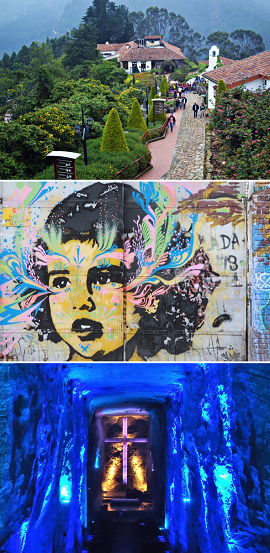 |
|
Bogotá, Colombia's capital, is located in the center of the country at an altitude of 2,640m (8,660ft.) above sea level and surrounded by the Andes Mountains. The vibrant city blends a
rich history, colonial beauty, colorful street art, beautiful architecture, and exquisite gastronomy. To explore local culture, there are numerous theatres, museums, and libraries to visit.
La Candelaria, the historic center in downtown Bogotá, welcomes you with cobblestone streets lined with Spanish colonial buildings, baroque churches and countless cafés. Don't miss the
Bolívar Square to see the Cathedral and the Liévano Palace (city hall). We also recommend visiting two of the nearby museums: the
Botero Museum dedicated to the works of Colombian painter and sculptor Fernando Botero and the
Gold Museum with over 34,000 gold pieces and countless pre-Hispanic artefacts. To get a feel for local food, head to
Paloquemao market to browse the stalls filled with fruits, vegetables, herbs, fish, seafood, and meats. If you want to see the city from another perspective, take the cable car up
Monserrate Hill for spectacular views and a walk through nature. In order to appreciate the beautiful countryside outside of Bogotá with its abundant vegetation and flowers, head to
Guatavita lagoon for a 2,5km (1,5mi.) hike and learn more about the legend of "El Dorado"!
The nearby town Villa de Leyva is a stark contrast to Bogotá. It was founded in 1572 and seems to have frozen in time with its narrow streets and whitewashed buildings complete with wooden balconies, arches or impressive wood and brass doors. On the way there, you can visit the underground salt cathedral Zipaquirá which was built by miners and has become a beautiful temple. A chilly yet impressive sight that seems almost otherworldly!
|
 |
|
 |
|
SAT TIP: HIKING AT CHINGAZA NATIONAL PARK
|
 |
When the hustling and bustling of Bogotá gets overwhelming, there are several national parks close by that promise a perfect escape for a day.
One of them is the
Chingaza National Park, located on the eastern side of the Andean Mountain range. The park offers a great opportunity for nature and photography lovers to be surrounded by
stunning landscapes with about 40 natural glacial lakes and matchless views. A local specialist guide is definitely helpful to learn about the high Andean forest, the sub-paramo and paramo ecosystems. As you walk along the trails, keep an eye out for local wildlife, especially birds, and the park’s
abundant flora with over 1,000 different species. The national park supplies several routes and trails with different levels of activity, difficulty and length. Since the park includes altitudes above 3,200m (10,498ft), you should take a couple of days in Bogotá to get used to the altitude before embarking on your hike. For more information about trips to Chingaza National Park or other excursions in and around Bogotá, please
contact us! |
 |
|
 |
|
FLAVORS OF COLOMBIA IN THE COFFEE TRIANGLE
|
 |
|
As the name suggests, the Coffee Triangle is the place to go to immerse yourself completely in the world of Colombian coffee, which is one of the best in the world. Stunning landscapes, local coffee farms and the world's largest palm tree are just a few of the things to discover here!
The Coffee Triangle consists of the three departments Quindío, Risaralda and Caldas. The region's
warm temperatures, regular rainfalls and rich volcanic soil create the ideal conditions for not only coffee but also plantains, bananas and other produce. In 2011, UNESCO declared the region, also known as the "Coffee Cultural Landscape", a World Heritage Site. The mountains also attract many thrill seekers who made the triangle a
hotspot for adventure sports such as rock-climbing, rappelling, paragliding and rafting. But also
outdoor activities like hiking, mountain biking or horseback-riding are popular.
The gateways to the coffee region are Armenia, Pereira and Manizales.
Besides coffee, Armenia and its surroundings are famous for arts and crafts, including products made from guadua, a type of bamboo cane. You can even visit a national center dedicated to the study of guadua! The Quimbaya Gold Museum displays an impressive selection of ceramics and metal works from the local Quimbaya culture. Just outside the city, you can visit the Quindío Botanical Gardens or the National Coffee Park, a theme park dedicated to the production and history of coffee.
Pereira hosts a yearly festival in August that celebrates both the city's founding and a successful harvest: the "Fiesta de la Cosecha" (Harvest Festival). The city is also the ideal starting point to explore the Otún Quimbaya Flora and Fauna Sanctuary as well as the Los Nevados National Natural Park.
Manizales is a center of local culture and folklore, hosting several events throughout the year. The most popular one, Manizales Fair, is celebrated in January with craft shows, parades, concerts and, the highlight, the International Coffee Pageant. There are also hot springs nearby and the landscape surrounding Manizales is a must for bird-watchers.
|
|
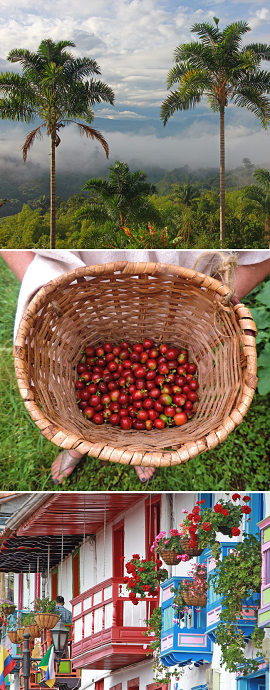 |
 |
|
 |
|
SAT TIP: COFFEE, QUAINT TOWNS AND HUMMINGBIRDS
|
 |
Of course a visit to a coffee plantation is a must when you are in the area. But how about a special twist? Hacienda Combia, located close to Armenia, not only introduces you to the different steps in planting, growing, harvesting and processing coffee. It also allows you to discover local traditions and important practices. You can even try your hands at making bamboo baskets and pottery! Your efforts will be rewarded with delicious, freshly prepared coffee.
We also recommend that you check out the lovely towns that are hidden in the hills and valleys of the coffee triangle. Two of our favorites are Filandia and Salento. They are perfect embodiments of the region's beauty and tranquility: small streets, traditional and colorful architecture, handicraft shops and stalls, cute cafés, delicious local food and stunning views of the surrounding nature.
To fully appreciate this breathtaking region, how about a hike through the lush cloud forest? Just a short drive from Salento, a trail takes you through the Cocora Valley, over rocky terrain, small rivers, and wooden bridges. After approximately 2 hours, you arrive at a truly magical place, the Acaime Hummingbird Reserve. It is dedicated to preserving the different species of hummingbirds that made a home here and you can marvel at dozens of the vividly colored birds whirring through the air and resting at feeders!
Please contact us if you want to know more about excursions in the Coffee Triangle! |
 |
|
 |
|
SAT TIP: THE CONDOR'S NEST
|
 |
A different and more immersive way to experience the Coffee Triangle is a stay in one of the lodges hidden away in the mountains. El Nido del Condor is such a hidden treasure. The lodge is located close to Villamaria in Caldas, on a plateau on the route to the Santa Isabel Mountain Top. The family that built the lodge took a sustainable approach in a desire to add value to the unqiue biodiversity, geography and culture of the area. The lodge is named after the nest of a couple of Condors that is located close by. You can observe them fly
over the two canyons that make up the plateau where the lodge is located! Guests sleep in
comfortable tent-like rooms equipped with a king size bed, standing table, luggage table, clothing cabinet, coat rack, fireplace and 2 chairs. The private bathrooms feature an indoor garden and a shower with views over the canyon. Furthermore, each room has two balconies with hammocks, tables and chairs - one facing towards the gardens and another facing the cliff of the canyon. The activities the lodge offers include
trekking, biking, birdwatching, night excursions and star-gazing.
Click here to learn more about packages and rates of El Nido del Condor! |
 |
|
 |
|
COASTAL CITIES AND DREAM BEACHES
|
 |
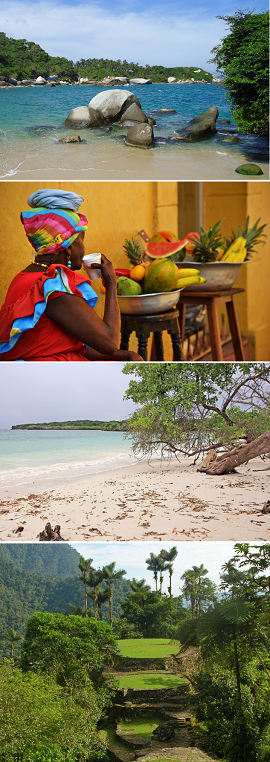 |
|
No journey through Colombia is complete without exploring the gorgeous beaches that can be found along the coastline!
One of the jewels of the Caribbean coast and one of the most popular destinations in the country is
Cartagena. Even before its official founding in 1533, the city has had a diverse history that includes gold-crafting tribes, Spanish colonialism, pirates, African slaves and immigrants. This eventful past has created a multifaceted city that was declared a UNESCO World Heritage Site in 1984. In the historical center, you can admire pastel-colored colonial buildings with vibrant flowered balconies, musicians are playing on the cobblestone streets and many beauties can be discovered in the winding alleys and hidden squares. Head to Mercado Bazurto, a traditional open-air market, to browse
local fruits, vegetables, clothing, and art. Cartagena is famous for its food, especially fish and seafood, and you have your choice of many excellent local restaurants to refuel after your explorations. If you prefer a hotel away from the city, there are lovely properties on the nearby
Baru Peninsula and the
Rosario Islands just off the coast.
Driving up the coast towards the north, you reach Baranquilla, also known as "la Arenosa" (the Sandy). Its atmosphere exudes charm, energy and beauty which is probably why many artists have their home here. Baranquilla is also famous for hosting the biggest cultural event in the country: Carnival. UNESCO even declared the festivities a Masterpiece of the Oral and Intangible Heritage of Humanity.
Further north lies Santa Marta, a small city with a beautiful and charming colonial center, many bars and restaurants. It is the gateway to "The Lost City", an ancient citadel hidden in the National Park Sierra Nevada de Santa Marta which is estimated to be 650 years older than Machu Picchu. It is also where explorations to the Tayrona National Park start. The reserve is one of the most spectacular bays of the continent with gleaming white sand, crystalline water and a deep sense of peace and tranquility.
Finally, did you know that the Caribbean island San Andrés, located off the Nicaraguan coast, is also part of Colombia? The archipelago is a UNESCO Biosphere Reserve and boasts paradisiacal beaches, clear waters, cays and coves, and many coral reefs that are filled with incredible fauna and flora.
Impossible to choose where to go, right?
|
 |
|
 |
|
SAT TIP: A BEACH HOTEL BETWEEN THE TREES AND A PARADISE UNDER THE PALMS
|
 |
Located on the Peninsula Baru,
Hotel Las Islas is just 45 minutes from Cartagena and 1h from the airport. The hotel's
55 bungalows are spread throughout the property and equipped with air-conditioning, WiFi, flatscreen TV, a private bathroom with freshwater shower and a furnished deck. Some are built on the seafront and offer a private pool, jacuzzi or direct access to the sea. Others are built
between the trees, 8-12m above the ground and also feauture a jacuzzi. Additionally, there is a
private island with 7 rooms for exclusive use for up to 14 guests. Another special is the
catamaran house boat with 2 bedrooms. The hotel features two restaurants, a cafe & ice-cream bar, a beach restaurant & bar as well as a club house bar. The cuisine includes local produce, fish and seafood. The beachfront spa and wellness center is perfect for relaxing. It offers treatments and massages, a sauna, a Turkish bath and private Yoga classes.
Our second recommendation, El Matuy, is located in Palomino, in the Natural Reserve El Matuy. The hotel offers 10 cabins made out of wood and palm leaves that have been built on the beach and are equipped with a private bathroom, furnished terrace and hammocks. Rest, peace and disconnecting from the world is what El Matuy aims for which is why there is
no electricity or WiFi in the rooms. Instead, the cabins and common areas are lit with candles and lanterns and the front desk supplies WiFi as well as options to charge your electronic devices. Meals are prepared with fresh local ingredients on a
wood-burning stove. The hotel provides a beach volleyball court, lounge chairs, hammocks, and kiosks at the beach. If you want to explore the surroundings, you can book day trips to the Sierra Nevada Mountains for hiking, the Palomino River for tubing, the Tayrona National Park or the Flamingos Fauna and Flora Sanctuary. That is what a real getaway looks like!
For more information about beach properties in Colombia, please contact us! |
 |
|
 |
|
MEDELLÍN, CITY OF ETERNAL SPRING
|
 |
|
Medellín is a city of contrasts and transformation. A pleasant climate and moderate temperatures throughout the year have earned it the nickname "City of eternal Spring". In recent years, Medellín gained international attention through the Netflix series "Narcos" about the life of Pablo Escobar, but visitors may be surprised by how much the city has changed since these times. Today, Medellín is a
bustling metropolis that is known for a strong economy and urban development. There are
numerous public parks, museums, theaters, libraries and event spaces for cultural festivities, the most popular one being the Medellín Flower Festival. You can explore the city's historical center, appreciate the colorful graffiti and art by Fernando Botero, or head to the city’s outskirts and immerse in nature. For a trip into the past, head to the top of Nutibara Hill. Here, a replica of an antique Antioquia town has been built:
“Pueblito Paisa”. Complete with a fountain, cobblestone streets, a church and small shops, it's a lovely experience. Another recommendation is a
streetfood tour. At its markets and street stalls, Medellín offers lots of emblematic dishes such as empanadas, buñuelos, arepas and cocadas - yum!
Outside of Medellín, you can visit colonial towns such as Santa Fé de Antioquia and Jericó.
|
|
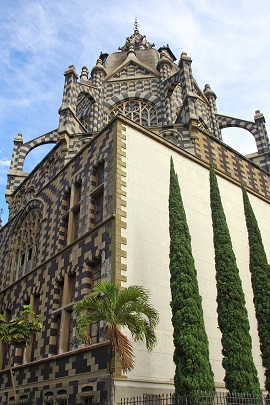 |
 |
|
 |
|
SAT TIP: MEDELLÍN BY BIKE
|
Instead of a regular city tour, why not hop on a bike and explore Medellín that way? An approximately
20km (12mi) long route takes you past the most important landmarks of the city, like
Botero Square with a permanent exhibition of 23 sculptures by Colombian artist Fernando Botero. While the majority of the route is flat, there are two hills to conquer. The first takes you to
"Pueblito Paisa" and the second to the
“Cerro Nutibara” viewpoint for some truly spectacular views of Medellín. But not to worry, in between the two you will have a chance to rest your legs at the
Botanical Garden which features more than 1,000 species of plants.
More options for biking and other outdoor activities outside the city can be found in the nearby national parks and reserves such as Arvi Park, La Romera Nature Reserve or San Sebastián La Castellana Ecological Reserve. Click here for more information! |
|
HISTORICAL GEMS OF THE SOUTHWEST
|
 |
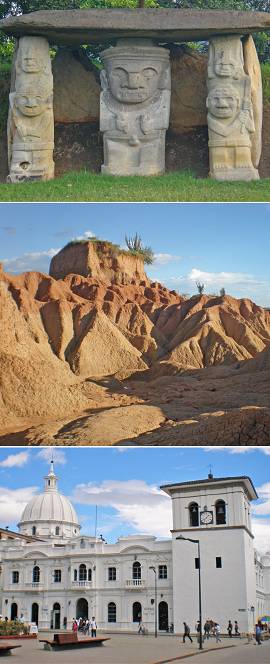 |
|
The Southwest of Colombia is an area rich with history, archeological exploration and incredible landscapes.
First, there is
San Agustín. Close to the town there is an archeological site that extends over 2.000km² with evidence of a
pre-agricultural society that dates back to 3300-600 BC: ancient tracks, field boundaries, drainage ditches and artificial platforms, as well as funerary monuments were discovered. The main archeological monuments are Las Mesitas, containing artificial mounds, terraces, funerary structures and stone statuary, the Fuente de Lavapatas, a religious monument carved in the stone bed of a stream, and the Bosque de Las Estatuas, where you can admire examples of stone statues from the whole region.
Not far from San Agustín lies the Tatacoa Desert which has one of the most impressive sceneries in Colombia. It occupies 330km2 of land colored in ocher and gray interrupted by green cactus. The area is heavily eroded and crossed by dry canyons that develop transiently in the winter months. These mysterious shapes are created on clay surfaces, creating labyrinthine gullies in the landscape that can reach 20 meters deep. The Tatacoa Desert is a geographically privileged location for star-gazing: you can observe 88 constellations from here.
Further south we reach Popayán, also known as “the White City” because of its chalk-white facades. It combines colonial architecture, great gastronomy using traditional ingredients, and a strong cultural and political history. It is nestled between mountains in the Valley of Pubenz which is the ideal setting for outdoor excursions. But there are also interesting archeological sites nearby.
One of these is Tierradentro, a UNESCO World Heritage site. It consists of underground tombs and burial chambers that reach up to 12m (39ft.) wide, making them the largest and most elaborate tombs of their kind. This site is a unique way to learn about the social complexity and cultural wealth of the pre-Hispanic societies that lived in the northern Andes Mountains.
|
 |
|
 |
|
CALI, WHERE THE RHYTHM IS AT HOME
|
 |
|
People love the music and dancing that seems to have a constant place in
Cali's streets. That is probably why Cali is known by Colombians as "Rumba Capital" and internationally as "Capital of Salsa". The city is a melting pot of indigenous, Afro-Caribbean and European heritage which has created a compelling atmosphere that is vibrant and spirited. The hot climate and cool evenings, people’s kindness, the stunning sceneries, great nightlife and good restaurants make Cali a favorite with travelers from all over the world.
When you start your exploration of Cali, we suggest beginning with the panoramic view over the city and the Cauca Valley from the top of
Los Cristales Hill, where the 26m (85ft.) tall Christ-the-King statue is located. From there, head to the
Sebastián de Belalcázar viewpoint and admire the panorama from a different angle. Now you´re ready to lunge into the bustling city with its colonial buildings, impressive churches and beautiful historical center. Definitely stop by
"La Ermita", a stunning Gothic church! If you are a cat person, the
"Cat Park" with its
collection of cat sculptures is the place for you. The first statue that started everything was the bronze sculpture “El Gato del Rio” by Colombian artist Hernando Tejada. And since you are in the salsa capital of the world, why not visit one of the many
dance schools to learn some Salsa steps that you can bust out during a club night?
In the countryside outside of Cali you can find many sugarcane plantations. A visit to one of the local sugarcane haciendas is a great opportunity to learn more about the production process.
|
|
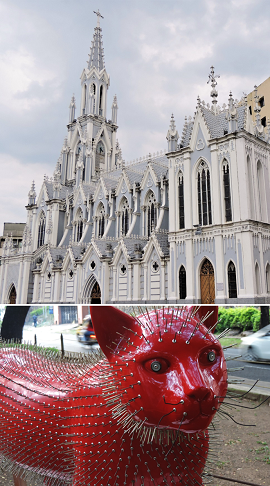 |
 |
|
 |
|
WILDLIFE AND NATURE GALORE IN THE WEST
|
 |
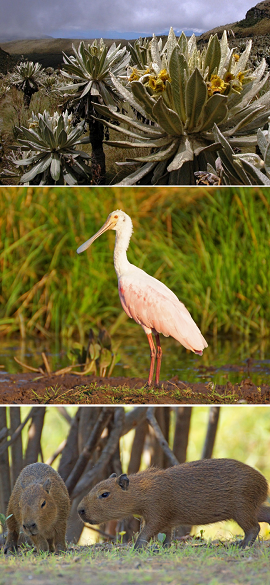 |
|
The whole western part of Colombia is a treasure trove for outdoor enthusiasts, wildlife observers and adventure seekers. There are mountains, sierras, wetlands and forests that are the ideal habitat for a variety of wildlife and plants, protected by various national parks and reserves.
In the north loom the highlands of the National Park Sierra Nevada del Cocuy. With its lagoons and frailejón plants, this mountain region is one of the most beautiful of Colombia. It has more than 700 species of vascular plants, making it one of the most diverse flora on one of the highest mountains in the world. The best way get to know the Sierra Nevada del Cocuy is to take one of the various trekking routes. From easy hikes to climbing tours at altitudes of 4,000-5,300m, here you find it all!
If you are looking for a more relaxed way to explore Colombia's nature, the Casanare region might be for you. It extends from the central highlands far to the northeast, almost to the border of Venezuela. This sparsely populated area is mainly used for agriculture and the stunning savannah landscape is perfect for hiking, biking or horseback riding. Keep your eyes peeled for anteaters, prairie owls, capuchin monkeys and exotic birds!
South of Bogotá, a unique natural spectacle awaits you in the form of the tropical grasslands of the "llanos". From the small town of La Macarena, you can embark on a multi-day trek that will take you to Caño Cristales, the world’s most beautiful river. As a result from pockets of algae that bloom during the height of winter, the river water appears to be a dizzying array of aquamarine, red, yellow and green. Less than 100 kilometers long, and rarely more than 20 meters wide, this compact slice of river offers a kaleidoscope of colors!
|
 |
|
 |
|
SAT TIP: EXPLORE THE LLANOS WITH ECOLODGE JUAN SOLITO
|
 |
Ecolodge Juan Solito is located on the shore of the Ariporo River in the north-east of the Hato La Aurora Reserve. With their palm tree cabins, the lodge managed to preserved the region’s architectural style. The lodge offers 7 rooms in the main house and 4 rustic cabins, all equipped with a private bathroom and fans. If you want to be adventurous, you have the option to sleep outside in hammocks; mosquito nets as well as units with bathrooms and showers are provided!
The programs the lodge offers are operated together with the local communities to provide a
participatory and interpretative experience. The lodge's packages include a variety of activities in Colombia's Eastern Plains. During a
safari you can experience the landscape and wildlife, such as capibaras, crocodiles, wild horses and several bird species. If you want to get active, you can embark on hikes on the trails close to the lodge while your guide explains the different plants and the uses they have for locals. The lodge also offers
horseback riding tours and fishing excursions where your catch will be prepared right on the spot!
To learn more about Ecolodge Juan Solito and other nature and wildlife packages, please contact us!
|
 |
|
 |
 |
|
The Colombian part of the
Amazon region is also referred to as "Amazonía" by locals.
Leticia, the region's capital, is a hospitable and comfortable city, surrounded by paths that lead to fascinating places in the Amazon jungle. The area is rich in ethnic groups, but the biggest part of the population are indigenous communities, such as the Ticunas, the Yacunas or the Huitotos. The communities have managed to preserve their customs, language, culture and traditions until today. Since they have always been living in harmony with their surroundings, they work hard in the preservation of the Amazon region.
Ecotourism is a big part of these efforts as it not only helps to finance the communities and their work but also spreads awareness of their cause. Today, more than 28 reserves exist to protect the indigenous peoples of Colombia's Amazonía and the unique ecosystem they live in. The Amazon is the place to go if you want to experience untamed nature and observe animals in the wild during
boat tours or jungle hikes. Some of the inhabitants that you might see are
pink river dolphins, monkeys, black alligators or anteaters. With more than 674 rare bird species, the region is also a paradise for birdwatchers. For those who are looking for an extra kick, how about climbing one of the giant trees or whizzing through the treetops on zip-lines? In short, Colombia's Amazon region is a fantastical place to discover and most definitely worth a visit!
Picture credit: Procolombia
|
|
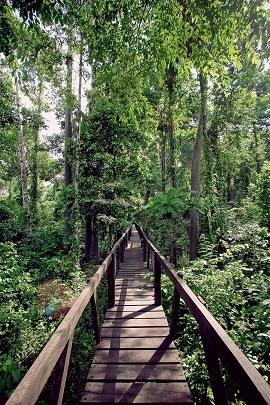 |
 |
|
 |

|
 |
|
 |
South American Tours - Global Sales Office
South American Tours GmbH | Kaiserstr. 23 | 60311 Frankfurt am Main | Germany
Phone: +49 (0) 69 4058970 | Fax: +49 (0) 69 40589799
Mail: sales@southamericantours.com | www.southamericantours.com
South American Tours - Sales Office North America
Mail: sales-america@southamericantours.com
Copyright © South American Tours 2012-2020
Imprint
South American Tours de Uruguay Agencia de Viajes S.A. | Buenos Aires 618, Piso 2, Oficina 201 | 11000 Montevideo | Uruguay
Tel.: +59 82 91 60 050 | Fax.: +59 82 91 55 406 | E-mail: info@southamericantours.com
Managing Director: Federico Büker | Registered Office: Montevideo | Local Court: Montevideo | Commercial Register: 1194 (Ministry of Tourism) | VAT identification no.: 215224020014

|
|
Protection of data privacy and cancellation of the subscription:
This message has been sent to 10063. If you do not want to receive mails in the future you can unsubscribe by clicking
here.
|
|
|
 |
|
 |
 |
|
|